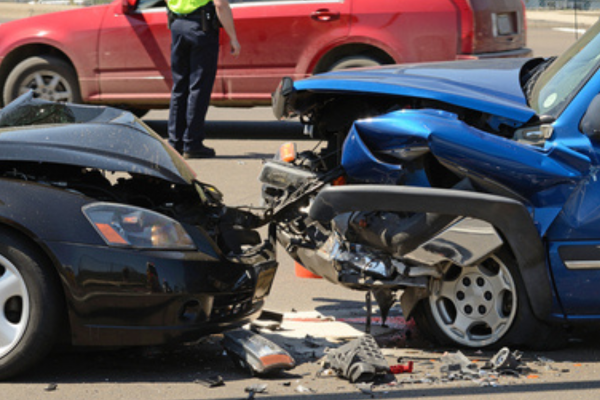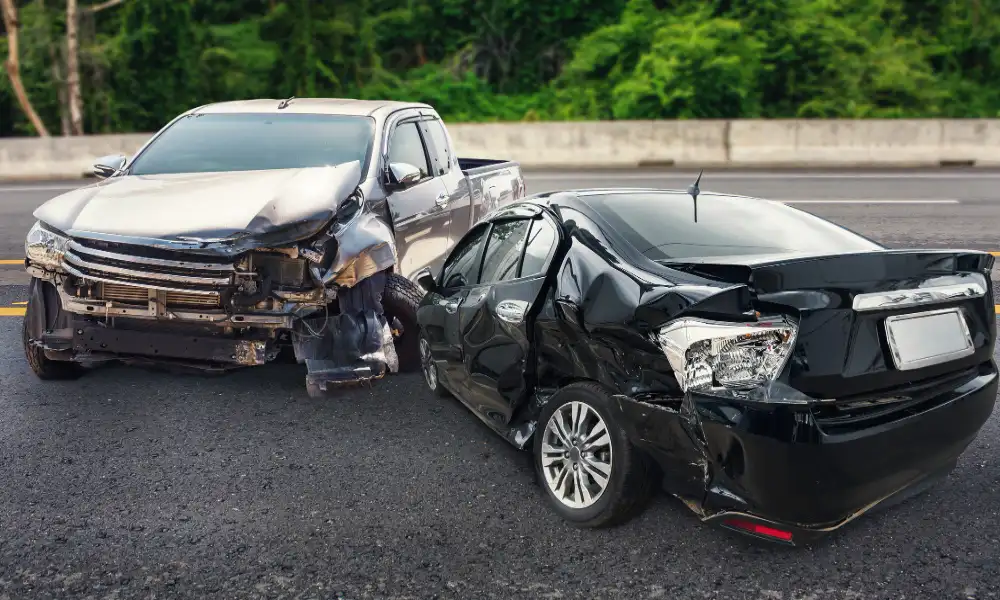The Mechanics of Head-on Collisions: What Really Happens?
Physics Behind the Crash: Analyzing Forces at Play
Head-on collisions are among the most catastrophic types of vehicle accidents, primarily due to the physics involved in such violent impacts. When two vehicles collide head-on, the forces at play can reach astronomical levels, often leading to severe injuries or fatalities. Understanding these forces requires a look into Newton’s laws of motion, particularly the second law, which states that force equals mass times acceleration (F=ma). In a head-on collision, both vehicles experience rapid deceleration, instantly changing their speed from the initial velocity to zero in a fraction of a second. This sudden change in momentum subjects the occupants of each vehicle to extreme forces. The combined weight of both vehicles can amplify the impact, resulting in potentially lethal outcomes. Moreover, vehicle crumple zones and safety mechanisms, such as airbags, play a crucial role in absorbing some of the energy of the crash. However, even with modern safety features, the sheer magnitude of forces involved can outstrip these protections, especially in cases where vehicles are traveling at high speeds.
The Role of Vehicle Design in Mitigating Collision Damage
Vehicle design has evolved significantly over the years to enhance safety during collisions. In the context of head-on accidents, safety features such as reinforced frames, crumple zones, and advanced airbag systems are designed to mitigate damage to the occupants. Crumple zones are sections of a vehicle specifically engineered to deform and absorb the energy of an impact, thereby reducing the force transmitted to the cabin where passengers sit. Modern vehicles also incorporate increasingly sophisticated materials aimed at reducing weight while maintaining structural integrity. Additionally, advancements in technology, such as automatic emergency braking and lane departure warnings, strive to prevent such collisions in the first place. Manufacturers are continuously conducting crash tests and utilizing simulations to improve vehicle design, making safety a priority through innovations and compliance with stringent regulatory standards.
Common Scenarios Leading to Head-on Collisions
While head-on collision accidents can occur in various scenarios, certain situations are more frequent culprits. One common situation is passing on a two-lane highway where a driver misjudges the distance and speed of oncoming traffic. This often leads to dangerous overtaking maneuvers that can result in catastrophic head-on impacts. Another frequent scenario involves drivers veering into oncoming lanes, often due to distractions or impaired driving. The intersection of two roads can also be a hotspot for head-on collisions when drivers fail to yield or run red lights. Understanding these scenarios emphasizes the importance of cautious driving behavior, rigorous law enforcement, and community awareness to address the underlying causes of these potentially tragic accidents.
The Human Factor: Understanding Driver Behavior and Errors
Cognitive Distractions: How Everyday Life Affects Focus on the Road
Cognitive distractions, often underestimated, play a significant role in vehicle accidents. Modern lifestyles inundate drivers with stimuli, from smartphones buzzing with notifications to in-car entertainment systems vying for attention. Such distractions can divert focus from the critical task of driving, leading to slowed reaction times and impaired judgment. Studies indicate that taking one’s mind off driving—even for a moment—can dramatically increase the likelihood of an accident, particularly in high-stakes situations encountered on the road. When a driver’s attention wavers, they might fail to notice changes in traffic conditions, the speed of oncoming vehicles, or the need to brake in an emergency. The proliferation of smartphones has exacerbated this issue, with many drivers resorting to texting or checking messages while behind the wheel. Therefore, raising awareness about the dangers of cognitive distractions, alongside effective enforcement of distracted driving laws, is essential in curbing head-on collisions.
Fatigue and Aggression: Emotional States that Lead to Recklessness
Driver fatigue and aggressive behavior are prominent contributors to head-on collisions. Fatigue severely impairs a driver’s ability to make timely decisions and can lead to microsleeps—brief lapses in attention that can occur when a driver is drowsy. These microsleeps may last only a few seconds but can result in catastrophic outcomes on the road. Moreover, emotional states such as anger or frustration can provoke aggressive driving behavior. Tailgating, weaving in and out of traffic, and excessive speeding can all stem from emotional stress, dramatically increasing the risk of a head-on collision. It’s essential for drivers to recognize the importance of mental wellness, not just in terms of avoiding distractions but also in managing emotions behind the wheel. Encouraging drivers to take regular breaks on long journeys and promoting programs that address aggressive driving behaviors can help mitigate risks associated with these emotional factors.

The Impact of Speed: How Driving Habits Contribute to The Severity of Crashes
Speed remains one of the most significant factors determining the severity of head-on collisions. The kinetic energy generated during a crash increases with the square of velocity, meaning that even a modest increase in speed can produce a disproportionately larger impact force. For instance, a head-on collision at 60 mph can unleash forces that are nearly four times greater compared to a collision at 30 mph. Such high-impact crashes often result in more severe injuries and fatalities. Furthermore, speeding reduces a driver’s ability to react to sudden changes in traffic conditions, such as another vehicle veering into their lane. Speed limits are established for a reason, but many drivers choose to ignore them, often justifying their behavior as “running late” or “just a little over.” Public education on the impact of speed, reinforcing adherence to speed limits, and continuous law enforcement efforts are vital to increasing safety and reducing the occurrence of head-on collisions.
The Legal Landscape: Accountability and Compensation Post-Accident
Navigating Liability: Who’s Really at Fault in a Head-on Collision?
Determining liability in a head-on collision can often be complex and contentious. Liability refers to the responsibility one party holds for damages or injuries resulting from an accident. In many cases, it involves an investigation into the actions of both drivers prior to the collision. Factors such as distraction, fatigue, speeding, and violations of traffic laws can all implicate a driver’s liability. In some jurisdictions, the concept of comparative negligence allows for a determination of how fault is divided between the involved parties. For instance, if one driver is found to be 70% at fault while the other is 30% responsible, any awarded damages may be assigned accordingly. This necessitates thorough documentation of the incident, including police reports, eyewitness accounts, and evidence gathered from the scene. As legal battles can become protracted, engaging legal experts who specialize in motor vehicle accidents is often advisable for those seeking compensation.
The Role of Insurance: What to Expect After the Crash
After a head-on collision, navigating insurance claims can be daunting for those involved in the accident. Each driver’s insurance policy will dictate the coverage involved, affecting damage reimbursement processes. In most cases, drivers are required to report accidents to their insurance companies promptly. Insurance adjusters will then assess the extent of damages, determining liability and compensation based on the facts gathered. Understanding one’s insurance policy, including the difference between liability coverage, collision coverage, and comprehensive coverage, is crucial. Additionally, factors such as medical expenses, vehicle repairs, lost wages, and pain and suffering are often considered when determining claims. For many, the insurance claims process can feel overwhelming, which is why seeking the assistance of legal professionals can streamline the experience and ensure fair compensation.
Legal Precedents: Landmark Cases in Head-on Collision Litigation
The legal landscape surrounding head-on collisions has been shaped by numerous landmark cases that set important precedents for victim compensation and liability standards. For instance, cases that have focused on the responsibilities of manufacturers concerning vehicle designs and safety features have opened debates surrounding the extent of corporate accountability in motor vehicle accidents. Other notable cases have underscored the necessity of adhering to traffic laws and the consequences of negligence when judgments in favor of victims were established based on the gross misconduct of the parties involved. These precedents not only assist in defining legal standards but also serve as guiding principles for future litigation involving head-on collisions, making them crucial for victims seeking recourse for their suffering.
Preventative Measures: Safer Roadways and Driver Education
Innovative Technologies: How Modern Cars Are Designed for Safety
Recent advancements in automotive technology have dramatically transformed vehicle safety design, especially regarding head-on collisions. Innovations such as adaptive cruise control, lane-keeping assist, and advanced driver-assistance systems (ADAS) are designed not only to improve driving comfort but also to enhance safety. These systems help monitor surrounding traffic conditions, reducing the likelihood of accidents through early detection of potential hazards. Additionally, the integration of automatic emergency braking detects impending crashes and can apply the brakes if the driver fails to respond in time. As technology continues to evolve, newer vehicle models are built with increasingly sophisticated safety features, such as collision detection systems and pedestrian detection technology, ultimately aiming to minimize the frequency and severity of head-on collisions.
The Importance of Public Awareness Campaigns and Education
Public awareness campaigns play a critical role in educating drivers on the dangers associated with head-on collisions and the importance of safe driving habits. Campaigns highlighting the risks of distracted driving, the need for regular vehicle maintenance, and adherence to traffic laws can contribute to a culture of safety on the roads. Schools, community organizations, and governmental agencies can collaborate to develop educational programs that emphasize the importance of responsible driving behaviors. Engaging content, such as simulations, workshops, and online resources, can effectively communicate the real-life implications of irresponsible driving, thus fostering long-lasting change in community behaviors. By raising awareness and providing education, we can cultivate an informed public that prioritizes safety, ultimately reducing the incidence of dangerous head-on collisions.
Road Design and Traffic Management: Creating Safer Environments
Well-planned road design and effective traffic management are foundational elements in reducing head-on collisions. Implementing features such as divided highways, improved signage, and better lighting can significantly enhance road safety. Additionally, the layout of intersections can be reworked to minimize conflict points where vehicles are likely to cross paths. Traffic calming measures, such as speed bumps and roundabouts, help reduce vehicle speeds in high-risk areas, further mitigating risks of collisions. Additionally, maintaining clear sightlines and prompt maintenance of road markings are critical to ensuring driver awareness of the surrounding environment. Collaboration between urban planners, engineers, and traffic authorities is essential to develop strategies aimed at tailoring road designs that prioritize driver safety and reduce the risk of head-on crashes.

